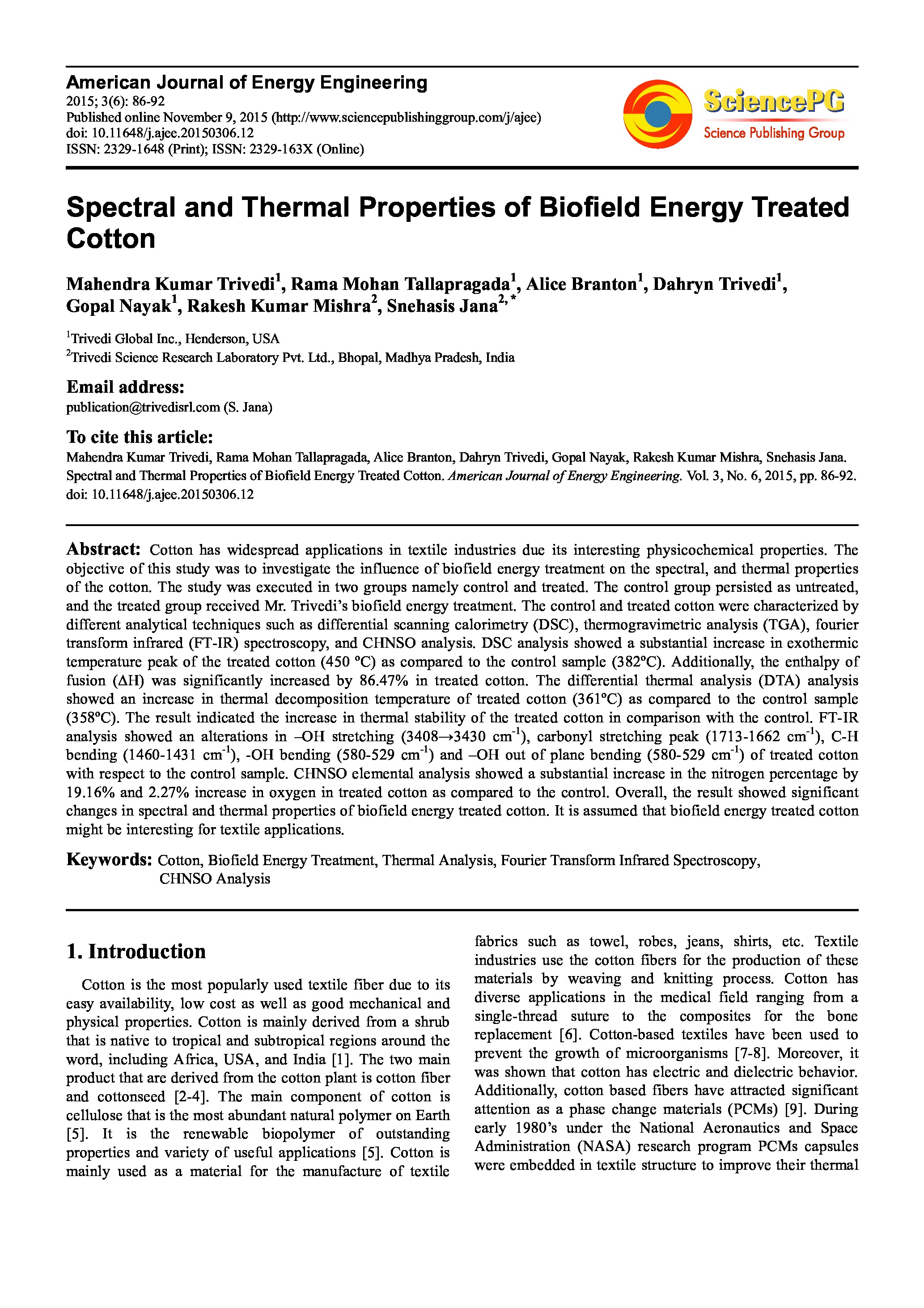Affiliation
Trivedi Global Inc.; Trivedi Science Research Laboratory Pvt. Ltd.
Main category
Natural Sciences (Analytical Chemistry, Method Development (Chemistr)
Abstract
Cotton has widespread applications in textile industries due its interesting physicochemical properties. The objective of this study was to investigate the influence of biofield energy treatment on the spectral, and thermal properties of the cotton. The study was executed in two groups namely control and treated. The control group persisted as untreated, and the treated group received Mr. Trivedi’s biofield energy treatment. The control and treated cotton were characterized by different analytical techniques such as differential scanning calorimetry (DSC), thermogravimetric analysis (TGA), fourier transform infrared (FT-IR) spectroscopy, and CHNSO analysis. DSC analysis showed a substantial increase in exothermic temperature peak of the treated cotton (450 ºC) as compared to the control sample (382ºC). Additionally, the enthalpy of fusion (∆H) was significantly increased by 86.47% in treated cotton. The differential thermal analysis (DTA) analysis showed an increase in thermal decomposition temperature of treated cotton (361ºC) as compared to the control sample (358ºC). The result indicated the increase in thermal stability of the treated cotton in comparison with the control. FT-IR analysis showed an alterations in –OH stretching (3408→3430 cm-1), carbonyl stretching peak (1713-1662 cm-1), C-H bending (1460-1431 cm-1), -OH bending (580-529 cm-1) and –OH out of plane bending (580-529 cm-1) of treated cotton with respect to the control sample. CHNSO elemental analysis showed a substantial increase in the nitrogen percentage by 19.16% and 2.27% increase in oxygen in treated cotton as compared to the control. Overall, the result showed significant changes in spectral and thermal properties of biofield energy treated cotton. It is assumed that biofield energy treated cotton might be interesting for textile applications.
DOI
10.18147/smn.2016/paper:475
Do you have problems viewing the pdf-file? Download paper
here
If the paper contains inappropriate content, please
report the paper. You will be redirected to the landing page.
